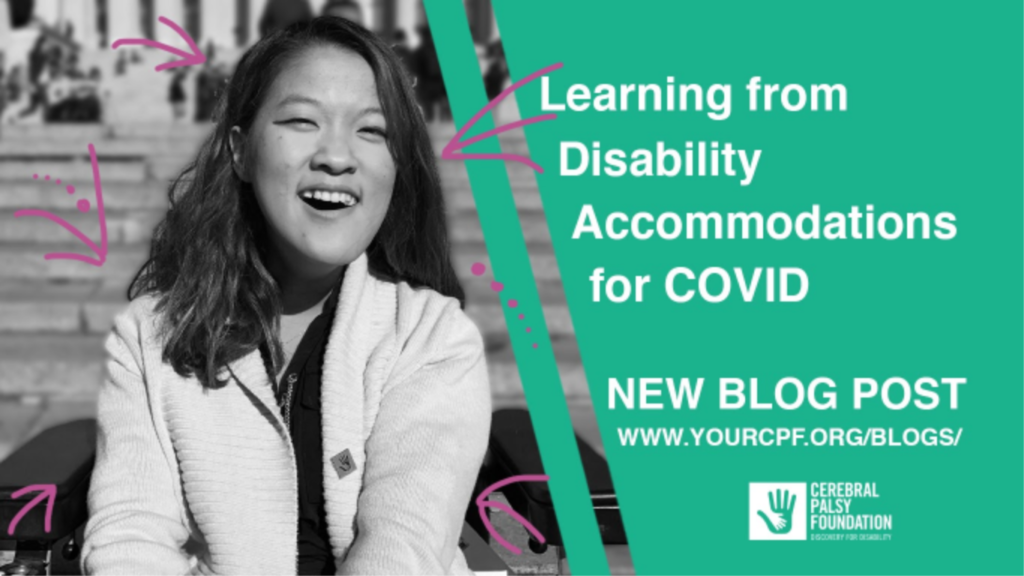
Phone: 212 520 1686
Email: info@yourcpf.org
What Companies and Schools Should Learn About Disability Accommodations from the COVID-19 Outbreak
As the COVID-19 outbreak continues to sweep through the country, there are increasing orders from local governments for residents to stay at home, unless they’re essential workers. Both professionals and students are relying on Zoom and other video conferencing software to work or learn from the comforts of their home, although such measures, in most cases, were not permitted before the pandemic.
Many people with disabilities have been asking their schools and workplaces to offer these sorts of accommodations for years, only to be denied because such protocols would be “too hard” to implement. We were left feeling ashamed that we needed such arrangements, and we had no other choice but to push our physical and mental capacities to adhere to able-bodies’ standards and expectations, or worse, forgo receiving that education or job position.
In reality, as we have witnessed thus far, implementing work- and learn-from-home policies can occur at a rapid rate, proving that it wasn’t “impossible” or “too hard” after all. Of course, people from all over the world have to adapt to this new way of living. The vast majority of people are benefiting from the accommodations that people with disabilities have been requesting for years. Unfortunately, the mainstream population is focusing merely on how such changes are “flattening the curve” of the coronavirus spread. To date, there hasn’t been a focus in the news media about how these implementations are finally allowing many folks in the disability community to live the way they’ve wanted to for years.
At the beginning of my sophomore year of college, six years ago, I was suffering from a herniated disc, which made it extremely painful to sit or stand. The semester had already started, so I approached the school administration and professors to brainstorm ways I could participate in classes from my dorm room until I had the pain under control. They were quick to give me an ultimatum: I’d have to take medical leave or independently come up with ways to still attend classes in person by keeping my pain at bay. It was a combination of perfectionism and shame that I chose the latter. I was already using a wheelchair at that time, after all, so I could stay in it for 12 hours at a time. However, I’d transfer myself to classroom desks as I’d typically do for my comfort, also to, admittedly, conform with the rest of my peers.
My case was on the milder side, and it was temporary. However, there are thousands of students who persistently battle with pain as a result of being denied accommodations and being forced to adjust to able-bodied norms. They carry the same kind of struggle when entering the job market: employers are reluctant to make accommodations for potential employees with disabilities, and that is a significant part of the reason why disabled adults experience unemployment rates that are two times the national average.
Although the systems that were put in place in response to the pandemic are not perfect, they have proved that drastically shifting working and learning environments is not only possible but also productive to all. Still, the long-lasting benefits of these accommodations to the disabled community remains an afterthought. Although the vast majority of the disability community is benefiting tremendously from this new way of life, there are still many shortcomings, especially for the learning disability and sensory impaired populations. For example, there have been reports from parents that schools are not adhering to their child’s IEPs on online learning practices. Also, video conferencing is not accompanied by closed captioning or ASL interpretations.
More likely than not, companies and schools will return to the pre-pandemic way of living after the virus goes away, leaving employees and students with disabilities to fend for themselves, once again. I would implore the general public to take the lessons from this accessible way of life and implement it as a new inclusive standard of living.
***
Blog written by Sarah Kim





